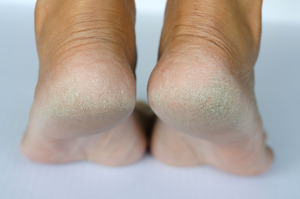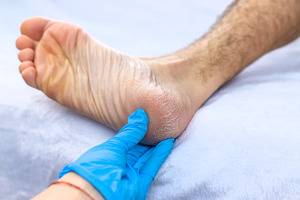Effective management often involves addressing the underlying causes and providing symptomatic relief. While self-care is important, professional podiatric treatment ensures safe and effective management, especially for deep or persistent cracks.
- Professional Debridement: A podiatrist can safely remove the thick, hard skin (callus) surrounding the fissures. This reduces pressure on the cracks and allows them to heal more effectively. Do not attempt to cut away hard skin yourself, as this can lead to injury or infection.
- Specialised Moisturisers & Dressings: We may recommend or prescribe stronger emollients (moisturisers) to hydrate the skin effectively. In some cases, special dressings or heel sleeves might be used to lock in moisture and protect the area.
- Addressing Underlying Causes: If a fungal infection (Athlete’s foot) or another skin condition is contributing, specific treatments will be provided.
- Footwear & Orthotic Advice: Guidance on appropriate footwear and potentially custom orthotics can help redistribute pressure away from the heels.
Important Note: While various treatments exist, a consultation at Fine Podiatry Clinic allows us to assess your specific condition and recommend the most suitable, personalised management plan. We focus on safe, effective solutions tailored to your needs.


